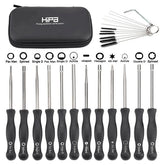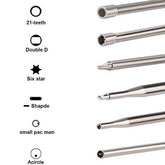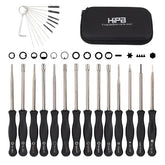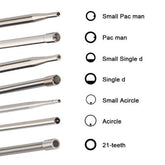Why Your Generator’s Electric Starter Isn’t Working – And How to Fix It
Is your generator's electric starter failing to crank the engine? A non-responsive starter can be frustrating, especially during emergencies. Let’s break down the four most common causes (with a focus on weak batteries and bad grounds) and walk through step-by-step diagnostics and fixes.
1. Weak or Dead Battery
Why It Matters
The starter motor requires significant power to turn the engine. A weak or dead battery is the #1 culprit for a silent starter.

Diagnosis
Check Resting Voltage:
A healthy 12V battery should read 12.6–12.8V when fully charged and at rest (no load for 1+ hours).
Below 12.4V: The battery is weak and may struggle to power the starter.
Below 12V: The battery is likely dead and needs recharging or replacement.
Load Test: Use a multimeter to check voltage while pressing the starter button. If voltage drops below 9.6V, the battery can’t deliver enough current.
Fix
Recharge the battery with a compatible charger.
If the battery won’t hold a charge, replace it (ensure it matches your generator’s specifications).
2. Bad Ground Connection
Why It Matters
A poor ground connection disrupts the electrical circuit, preventing the starter from receiving power.

Diagnosis
Inspect the battery ground cable (usually black) connected to the generator frame or engine block.
Look for:
Corrosion or rust on terminals.
Loose or frayed wires.
Test the Ground:
Set your multimeter to continuity mode.
Place one probe on the battery's negative terminal and the other on the starter's metal housing.
If there's no continuity, the ground path is broken.
Fix
Clean corroded terminals with a wire brush and baking soda/water mix.
Tighten loose connections.
Replace damaged cables.
3. Faulty Starter Solenoid
Why It Matters
The solenoid acts as a relay, sending power from the battery to the starter motor. If it fails, the starter won’t engage.
Diagnosis
Listen for a Click: When you press the starter button, a single loud click (but no cranking) often points to a bad solenoid.
Bypass Test:
Locate the solenoid (usually near the battery or starter).
Identify the two large terminals: one connected to the battery, the other to the starter.
Use a screwdriver to carefully bridge these terminals.
If the starter spins, the solenoid is faulty.
If nothing happens, the issue is elsewhere (e.g., starter motor).
Fix
Replace the solenoid (typically a 20–50 part). Ensure it matches your generator’s model.
4. Ignition Switch Issues
Why It Matters
A worn-out or dirty ignition switch can interrupt the signal to the solenoid.

Diagnosis
Test the Switch:
Disconnect the ignition switch wires.
Use a multimeter in continuity mode.
Turn the key to the “Start” position. If there’s no continuity, the switch is faulty.
Fix
Clean the switch contacts with electrical cleaner.
Replace the switch if cleaning doesn’t work.
5. Starter Motor Failure
Why It Matters
If power reaches the starter but it doesn’t spin, the motor itself may be dead.
Diagnosis
Direct Power Test:
Disconnect the starter from the generator.
Use jumper cables to connect the starter directly to a healthy 12V battery.
If the starter doesn’t spin, it’s faulty.
If it spins, the issue is elsewhere (e.g., wiring or solenoid).
Fix
Replace the starter motor.
For older units, consider rebuilding the starter (replace brushes or bearings).
Safety Tips
Always disconnect the battery before working on electrical components.
Wear gloves and eye protection.
Consult your generator’s manual for model-specific guidance.
Final Thoughts
Most starter issues boil down to weak batteries or bad grounds, so start there! Methodically testing each component will save time and money. If you’re unsure, consult a professional – but with these steps, you’ll likely solve the problem yourself.























